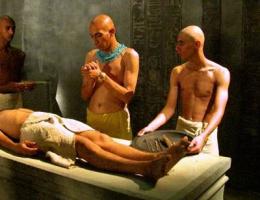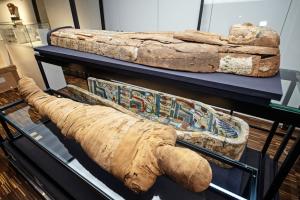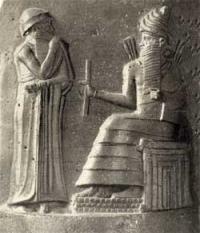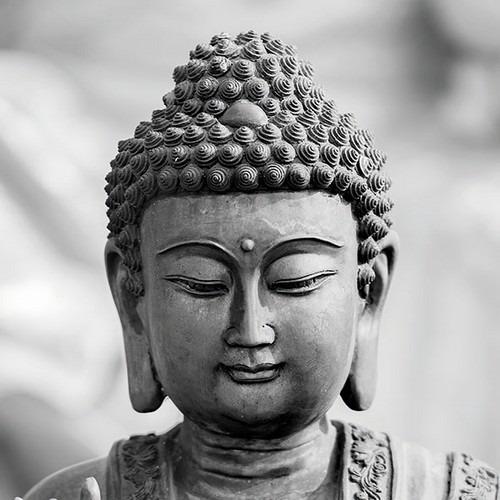Mummification and Embalming

Many times there is confusion between the terms "Mummification" and "Embalming" but we will now clarify the difference. We begin immediately by specifying that the name "Mummy" to the corpses treated was given by the Greeks who, finding bodies embalmed with bitumen or asphalt, gave them this name. Embalming is the term used to define an artificial process by which a body is subjected to keep intact. Since ancient times some peoples have tried to preserve the bodies of the dead persons to avoid deterioration. The techniques mainly made use of the removal of the bowels, in the dehydration of the body, in impregnating the corpse with resins and various substances.
We explain the various techniques developed over the millennia by some civilizations.
EGYPT
Egypt is perhaps the place where more than any other the concept of earthly life is linked to eternal life in the afterlife. With death the body became a corpse (in Egyptian Khat) that had to be preserved from putrefaction (in the famous "Book of the Dead" there are invocations to the god Osiris to preserve the body and give it immortality), so it was necessary to embalm it. The Egyptians began embalming practices during the 1st dynasty and refining them over the centuries. Funeral homes spread in large numbers and all social classes benefited from them. The ancient historians have handed down to us how the embalming method was practiced. There were three methods.
The most expensive method was to extract the brain through the nostrils with a hook and the remaining part was removed by introducing some substances. With a sharp stone a cut was made along the abdomen, the intestines were pulled out (when the body of a Pharaoh was treated, the stomach, lungs, liver and intestines were placed in the famous "Canopic" vessels, while the heart was subsequently put back in its place) and was cleaned up. Then they purged it with palm wine and a second time with powdered aromas; they filled the belly with pure minced myrrh, cassia and other substances except incense, and sewed it up. This done, he was immersed in nitro for seventy days. After the period, it was removed from the nitro, and once washed they wrapped the whole body with strips cut from a linen cloth, coated with rubber, which the Egyptians generally used instead of glue. The relatives were given the body and they took care of having a wooden form made in a human figure, they put the body inside it and after having sealed it it was kept in a sepulchral chamber, placing it upright against the wall.
The second method was less expensive and proceeded by filling syringes with cedar oil and filling the belly of the corpse with it, without cutting it and not proceeding to remove the intestines, but introducing oil through the anus, avoiding the flow of come back; then the body was put in nitro for the pre-established period and finally the cedar oil was made to come out of the belly which carried away with it the intestines and the macerated viscera. The flesh had been consumed by the nitrous, so only the skin and bones remained of the corpse. Eventually the body was delivered to relatives without further processing.
The third and cheapest system was used to embalm the poor persons; the belly was cleaned with a purge, was put under nitro for seventy days and finally delivered.
A curiosity concerned the wives of notables and beautiful and important women; they were not given immediately for embalming, but delivered after three or four days. This was done so that the embalmers would not rape them; in fact some embalmer had been surprised while he raped a fresh corpse of a woman.
The Shiites
This people inhabited southern Russia and practiced embalming. When a king died they waxed his body, cut his belly, cleaned it and filled the internal parts with various aromatic substances and finally stitched it up. The corpse was then placed in a tomb covered with a large mound of rocky material. A year after their death they took fifty servants, strangled them together with fifty horses and after having removed all the entrails, they were sewn up and buried together with the king.
Ancient Mesopotamia
In this region some populations already in the second millennium BC had reached the highest levels of civilization and used embalming techniques reserved mainly for kings. The death of a sovereign followed a protocol that provided for the exposure of the corpse for three days, after which it was immersed in a bath of aromas, anointed with fine oil, dressed in royal clothes. Final act is the deposition in a rectangular stone sarcophagus closed by a huge lid. Unfortunately the riches buried with the kings attracted the profaners and so all the tombs were found empty.
North America
In the pre-Columbian period, the preservation of corpses was practiced by the peoples of the North by means of simple drying (with smoke, fire or cold depending on the region), even with prior evisceration. Almost all the mummies found are in a curled position, wrapped in skins and fabrics. Among the various populations that lived in North America, that of Virginia reserved a particular treatment for its kings. First of all they cut the skin of the corpse along the entire length of the back and the dead was thus completely and perfectly skinned. The bones were then freed from the flesh, but without cutting the ligaments, so that the skeleton was put back into its skin which had meanwhile been kept moist and elastic with oil and fat. The operation by filling the spaces left empty by the meat with fine sand, and stitching up the skin. The embalmed corpse was taken to a special tomb where the other deceased monarchs were. His flesh, exposed to the sun and well dried, was placed in a basket and placed at the foot of the embalmed corpse.
Central and South America
The most ancient bodies of the entire American continent have been found in Chile in Pisagua Viejo, dated 5000 BC. Various studies have traced back to the embalming method used. The procedure consisted in the removal of the bowels, emptying of the cranial cavity through circular perforation of about two centimeters in diameter, filling the cavities with feathers, pieces of wood, leather, etc.; finally by treating the external surface of the corpse with substances and objects to restore the characteristics it had in life. The Incas practiced embalming with their emperors or nobles. When the emperor died, the whole kingdom was in mourning. All his concubines and his servants followed him into the underworld: after having drunk them they were strangled. The emperor's corpse was embalmed, removing the intestines and replacing them with cloth impregnated with balms and drugs. The drying process was favored by the dryness of the coastal desert and by the sterile and porous sand. In Ecuador the Jivaro and in Brazil the Mundurucù practiced the embalming of the heads.
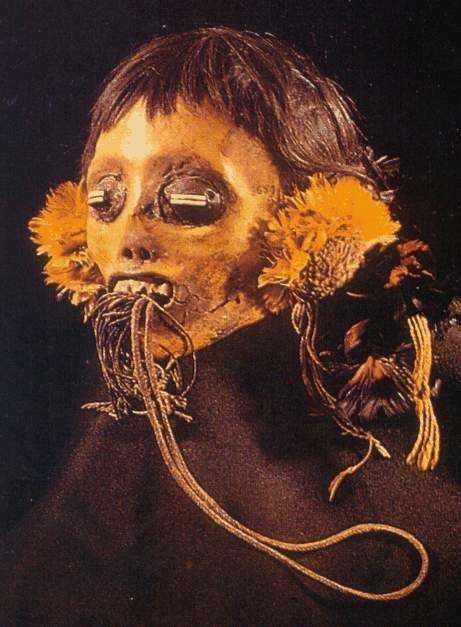
The Mundururucù live in the Amazon and are perpetually at war with neighboring tribes. When a Mundurucu kills an enemy, he cuts off his head and takes it to his hut. In his refuge the head is prepared in a singular way.
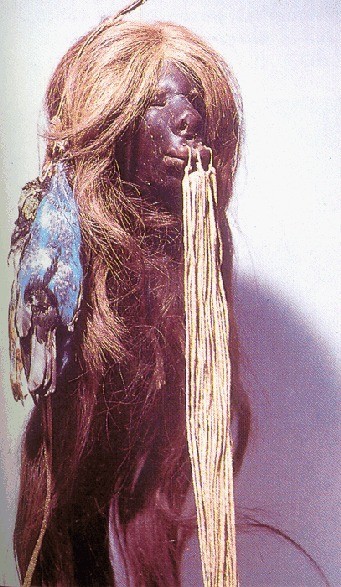
Extracting the brain through the foramen magnum, he carefully washes the skull, fills it with cotton and, after drying it, hangs it over a hearth to obtain perfect drying. He will take it with him on hunting trips.
Embalming Artists
Many were the characters who in more or less recent times tried their hand at the art of embalming corpses; some with poor results, others with excellent final results.
Among the many, the French Fragonard deserves particular attention. Born in 1732 in Grasse, he attended the school of the famous surgeon Renè Lambert to take a "brevet d'apprentissage"; he obtained the title in 1759. In 1763 he became director of the Veterinary School of Lyon. In this city Fragonard became a professor and demonstrator of anatomy, also devoting himself to the study of poisons and research on the most suitable chemicals for the mummification of corpses. In 1765 he opened a similar school in Paris and continued to improve with care in the anatomy of some animals and man. With great enthusiasm, in a few years he succeeds in embalming or storing thousands of animals in special liquids. His fame grows and he creates several enemies who manage to get him to remove the professorship. Fragonard continued his anatomical studies anyway, but in 1795 the authorities dismembered the collection of Alfort which, with the passage of time, was almost entirely lost. His creations amazed both for their originality and perfection. An example is provided by the famous "Horse and rider", where the muscles with tendons, veins, arteries that are detached or fluttering are highlighted on the skeleton.
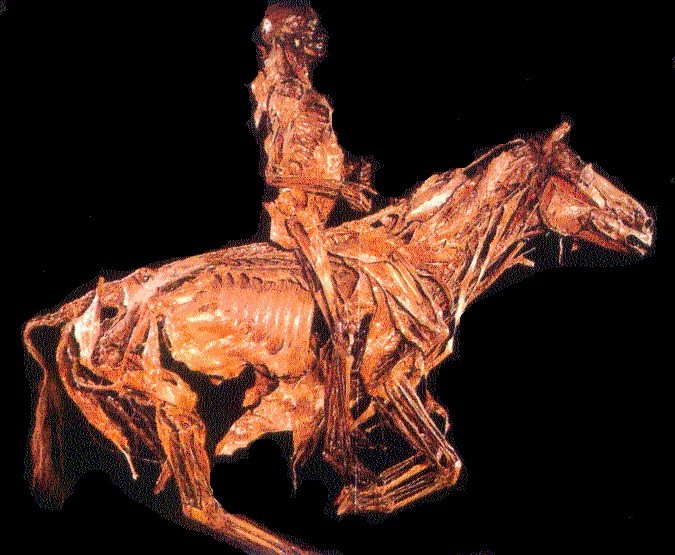
Unfortunately, as I mentioned before, of the various creations there survived today very few, perhaps a dozen left, and the secret of the techniques used remains a mystery.
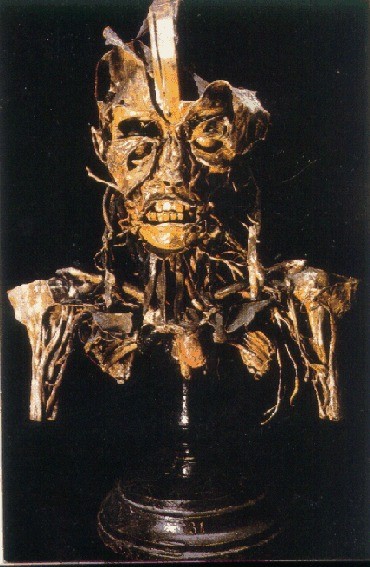
Fragonard died on April 5, 1799.
We could speak of many other persons who dedicated themselves to the preservation of corpses, but the list would be long so we will mention only a few.
Paolo Gorini in 1873 was commissioned to embalm the body of Giuseppe Mazzini. Gorini went to Pisa on February 12, 1872 where Mazzini had died two days earlier. Our expert embalmer had specialized in two embalming methods, one that preserve a body forever but took months of work and the other that preserve the corpse for only a short time with a preparation phase of a few hours. He decided on the longer method. Due to political problems for the display of the body in order to give the deputies the opportunity to pay homage, Gorini had to wait until two o'clock on 13 February. The corpse was carried into a room but the putrefaction had begun and the stinking gases floated all over the body. Gorini somehow managed to embalm Mazzini's body (he applied some variations of the original method), but he himself declared that the result was not satisfactory.
The preparation phase subsequently continued in Genoa and lasted until October. The final result was certainly not good, but Gorini undoubtedly did the best.
We report the case of Dr. Giuseppe Paravicino who devoted himself to mummification techniques. Between 1901 and 1917 he was director of the Pathological Anatomy Institute of the mental hospital in Mombello, near Milan. Dr. Paravicino carried out his experiments on the bodies of people who died in the hospital. Today some of these preparations are found in a room of the "Paolo Pini" psychiatric institutes near Milan. It consists of two whole bodies of a woman, six heads, a head with a torso and other human pieces. All the bodies are perfectly preserved, but Dr. Paravicino took the secret of his technique to his grave. According to some researches, by means of a special pump, the Paravicino injected inside the cadavers to be mummified a mixture of wax, paraffin and other particular solvents. A proof of this thesis is provided by the whole cadavers where in the legs there are two holes, one in the femoral artery and the other in the femoral vein; by injecting the solution through the artery, it spread throughout the body and then came out into the hole in the femoral vein of the other leg. This seems to be the most accredited hypothesis.
Another great student of embalming techniques was Girolamo Sagato. Born in Vedana (Belluno) on 13 June 1792 from a poor family, since he was a boy he cultivated a great passion for natural sciences and over the years his interest focused on the techniques of conservation of bodies. He had the opportunity to work in Egypt, where his great passion paid off. Thanks to his spirit of observation and study of some natural phenomena and particular preparations, he was able to develop a technique that petrified the treated bodies. Many students of human anatomy were amazed to see the petrified pieces of: muscles, liver, testes, bowels, arteries, veins, etc.
In some cases, thanks to variations of the used technique, it could reduce the petrifying effect, giving the body a medium consistency and ensuring that the joints were flexible and the skin color changed slightly, while hair, beard, hair remained firm. Among the many works carried out there is an inlaid table, where the Sagato arranged 214 pieces of the human body treated. The pieces look like natural hard stones of the most beautiful varieties, for example the Siberian jasper obtained from the spleen, the Spanish blood jasper obtained from the kidney of a fetus, the Cyprus coral obtained from a piece of heart and so for the tongue, liver, placenta, brain tumor and others from which he obtained other varieties of stones. His usual prowess caused envy and he failed to obtain permission and funds to apply his technique to an entire corpse. He died in misery taking his secret to his grave.









